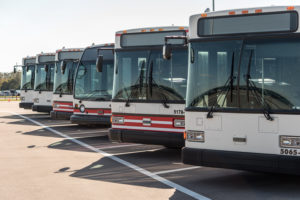A starter solenoid is a critical part of your fleet vehicles’ systems, as without it, you wouldn’t be able to start your trucks. It takes a lot of power to start a vehicle, and a solenoid is needed to manage that power. Putting the wrong kind of solenoid in, however, could be disastrous.
Here is a basic explanation of how a starter works, the different kinds of solenoids, and why they aren’t interchangeable.
How a Starter Solenoid Works

A century ago, in order to start a car’s engine you had to crank it by hand. That system was quickly done away with for the sake of convenience, of course. In order to be effective, though, the starting mechanism has to be able to drive the engine fast enough for it to generate power on its own — a tall order, as it requires a lot of power.
Without the modern ignition system and the starter solenoid, thick cables would have to relay power from the battery to the ignition, and again from the ignition to the starter. The ignition system and the starter solenoid makes it possible to run one cable only, from the battery to the solenoid, with the solenoid effectively acting as a dam, not letting the power through until the ignition is turned.
When the ignition is turned to the start position, the starter solenoid closes the circuit, sending the power to the starter, which then turns the engine. Once the engine is running under its own power, the driver releases the key, returning the ignition to the “on” position. The solenoid then opens the circuit and cuts the power to the starter.
Regular vs. Continuous Duty: What’s the Difference?
A continuous duty solenoid works much like a regular starter solenoid, opening and closing a circuit in order to turn the power flow off and on. As you might have guessed, however, in the case of a continuous duty solenoid the power flow is more of a constant, whereas a starter solenoid operates intermittently. The power traveling through a continuous duty solenoid is also much lower, because it has to run for long periods of time. Continuous duty solenoids generally don’t power any system nearly as hot as your vehicle’s starting system, so they also are made to withstand much lower levels than starter solenoids.
Why They Aren’t Interchangeable
Using the wrong solenoid could cause it to burn out very quickly, causing you more repairs. To minimize repairs, save money, and ensure that your fleet’s vehicles last as long as possible, it’s important to always ensure that you use the correct solenoid for the application.
Contact us today to talk your options over or place your order online.


